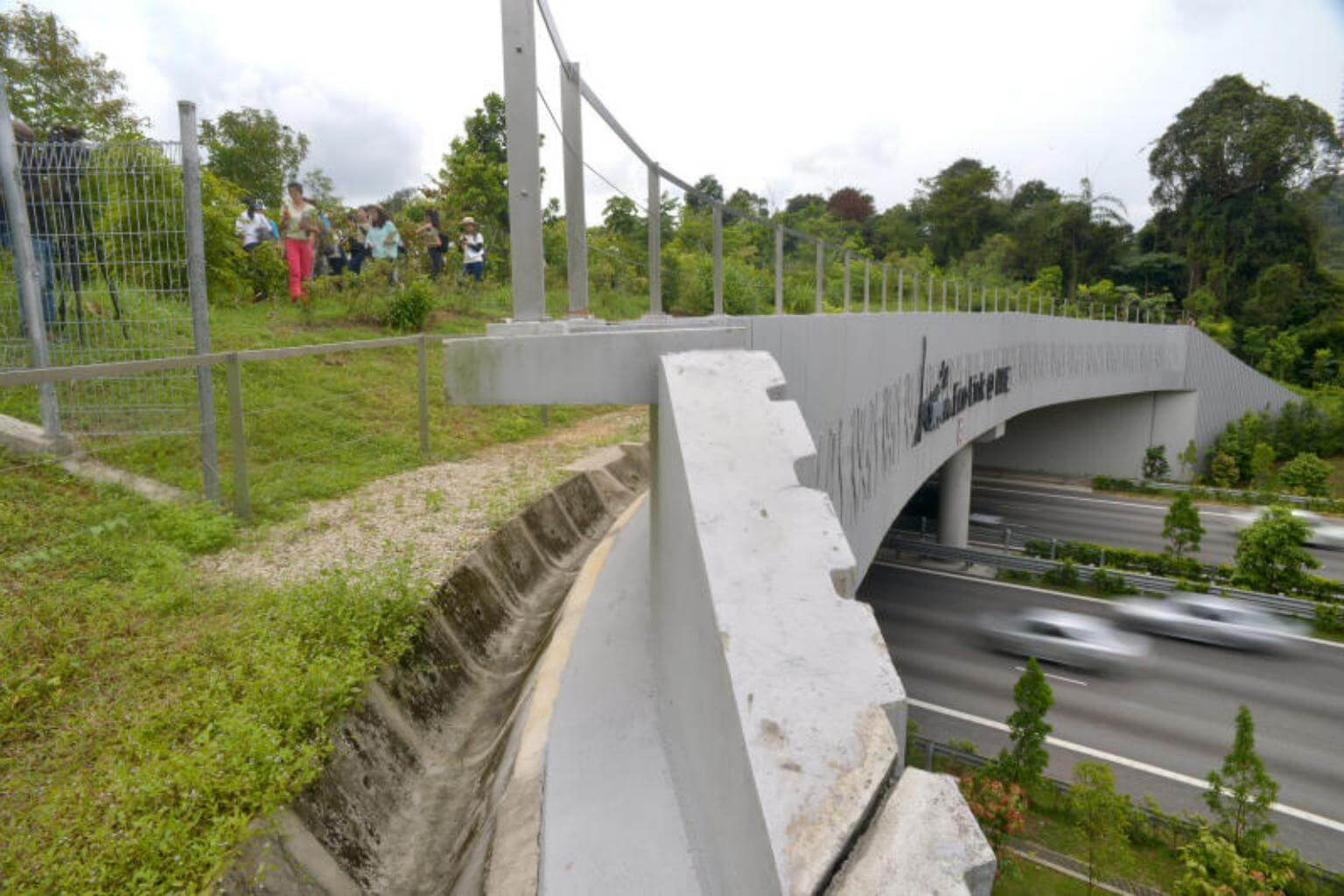Guided walks on wildlife bridge spanning BKE to be stopped until further notice
Sign up now: Get ST's newsletters delivered to your inbox

The Eco-Link@BKE is an ecological bridge that spans across the Bukit Timah Expressway, connecting Bukit Timah Nature Reserve and the Central Catchment Nature Reserve.
PHOTO: ST FILE
Follow topic:
SINGAPORE - Guided walks on a wildlife bridge that is otherwise off limits to members of the public will not be continued by the National Parks Board (NParks).
A notice on NParks' website showed that the guided walks have been postponed "until further notice", and that the website will be updated if the guided walks resume.
The decision not to continue the walks was made so as to limit human impact on the bridge, which spans the Bukit Timah Expressway (BKE). Members of the public are not allowed on the bridge outside of these walks.
Mr Wong Tuan Wah, NParks' group director for conservation, told The Straits Times that the board has detected the use of the eco-link by animals such as the pangolin, slender squirrel, common palm civet and various species of birds and snakes.
"In order not to affect the animals' movement patterns and to allow more animals to adapt to and use the eco-link, subsequent walks have not been scheduled. We are continuing to monitor the animals' movements," he added.
The $16 million Eco-Link@BKE, which connects the Central Catchment and Bukit Timah nature reserves, was opened in 2013.
Human access to the ecological bridge was restricted - to allow vegetation to grow and to let wildlife get used to the bridge without human disturbance - until November 2015, when NParks announced that it would conduct eight guided walks.
The walks, which were capped at 20 per tour, aimed to help people learn about the different kinds of animals that use the link, as well as interesting facts about both nature reserves.
NParks conducted eight such walks on four dates between the end of 2015 and January 2016, and these were attended by about 160 participants.
The Eco-Link@BKE aims to help the shy, elusive denizens of Singapore's forests move between vegetated areas in the Bukit Timah and Central Catchment nature reserves.
The ability to move between one forest area and another is important for animals, especially in Singapore.
This is because the island's nature areas are fragmented by urban development, unlike in countries that have rolling acres of forests. Being able to move from forest to forest will help animals feed and breed without becoming isolated.
However, human encroachment could prevent the shy, elusive animals from using it, which is why people are not allowed to visit the bridge as they would any other park or nature reserve.
However, NParks' Mr Wong said the board has found members of the public trying to visit the eco-link on their own.
"We have issued advisories to remind them not to do so. We would like to urge visitors to play their part in the conservation of our native biodiversity by refraining from entering restricted areas, so as to allow rare native species to establish themselves. There are many designated trails in the nature reserves from which biodiversity can be observed, and we advise visitors to stay on them. This will also prevent visitors from getting lost," he said.

